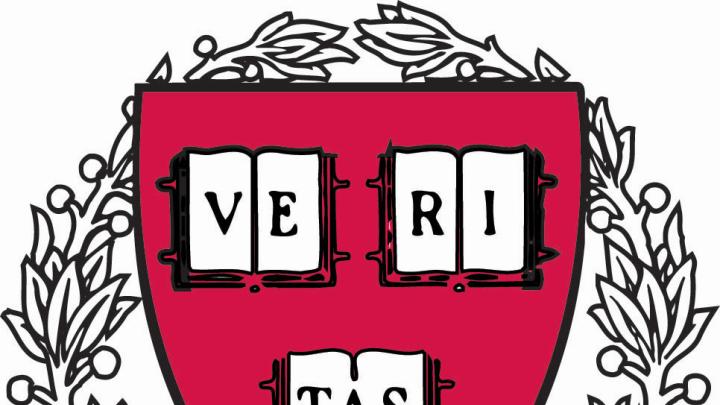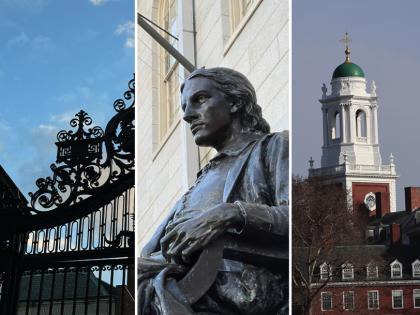What might the University expect when Harvard Management Company (HMC) discloses endowment investment results for the fiscal year ended June 30, 2014 (a report that typically appears several weeks into the new academic year)? Certainly, some personal overtones are associated with what is normally a rather restrained, data-filled announcement: Jane L. Mendillo, HMC’s president and chief executive officer, earlier revealed that she will step down at the end of 2014, and Paul J. Finnegan recently became Harvard’s treasurer (a Corporation member and the University’s senior financial authority) and joined the HMC board. So this is, respectively, Mendillo’s last HMC report and Finnegan’s first.
Personnel changes aside, two questions are of greater moment for the operations that depend on distributions from the endowment—the University’s largest source of revenue, nearly 36 percent in fiscal 2013:
- How strong have returns on endowment assets been, in a period of continued favorable conditions for many categories of investments around the world?
- Strictly for scorekeeping purposes, is this the year when the endowment returns to its peak value—$36.9 billion—recorded in fiscal 2008, just before the financial crash and ensuing recession?
Understanding the possibilities requires two distinct analyses.
Possible Endowment Returns
During fiscal 2013, HMC earned 11.3 percent on endowment assets, after expenses.
It is early in the reporting season for fiscal 2014 (and of course other investing institutions’ portfolios and needs differ from Harvard’s), but the first indications are that results will be strong.
- The huge California Public Employees’ Retirement System (CalPERS) reported preliminary fiscal 2014 returns of 18.4 percent—up from 12.5 percent in the prior year. It cited strength in public equities (global stock holdings, up 24.8 percent) and real estate (up 13.4 percent). Private-equity assets appreciated 20.0 percent.
- The Massachusetts state pension fund reported a 17.6 percent investment gain for fiscal 2014, up from 12.7 percent in the prior year. The investment managers cited strength in private equity, public equities, and real estate.
Perhaps coincidentally, the Massachusetts fund’s performance has slightly outperformed, but largely mirrored, the direction and absolute returns HMC has reported during the past half-dozen years (Harvard's recent results are summarized here). Of greater significance is how both the California and Massachusetts funds explained their performance during the year.
According to its “policy portfolio” (its allocation model for assets), HMC aims to invest one-third of the funds it manages in public stocks (11 percent each in domestic, foreign, and emerging-market equities)—a lower share than many public pension funds and other endowments, and something of a disadvantage given the sustained, significant appreciation in stock prices. During the year ended June 30, broad market indexes registered about a 25 percent gain for U.S. stocks, about 24 percent gains for international markets in developed countries, and about 15 percent for emerging markets.
HMC has increased its allocation to private-equity funds, now 16 percent of the policy portfolio—a segment in which its annualized returns have been below 10 percent during the past decade, trailing public-equity returns despite the greater risks associated with private equity (for which investors would expect a greater return). Mendillo cited this lagging performance as a disappointment last year, when the category earned an 11.0 percent return. Stronger private-equity returns in fiscal 2014 would be a significant boost for HMC’s overall results.
HMC’s commitment to real assets now represents one-quarter of the portfolio (natural resources, such as timber and farmland, 13 percent; publicly traded commodities, 2 percent; and real estate, 10 percent). Real estate performed well in fiscal 2013, and Mendillo has been enthusiastic about the performance of recent, directly managed investments. Continuing gains there could also be important for the portfolio, in a year of uncertain returns for several categories of commodities, in the wake of China’s slowing economic growth and lessened appetite for raw materials.
Hedge funds, or “absolute return” strategies, are very heterogeneous, and difficult to compare. HMC directs 15 percent of assets to such strategies in the policy portfolio. Its results were strong last year; CalPERS, which may have very different strategies and managers, showed just a 7.1 percent return for its absolute-return assets in fiscal 2014, and has reportedly been reducing its investments in this class.
Finally, HMC has a 9 percent policy-portfolio commitment to fixed-income investments (a mix of domestic, foreign, and inflation-indexed bonds). Indexes of the U.S. bond market’s performance during the year vary, with high-yield (so-called “junk”) bonds producing outsized returns of nearly 12 percent, municipal bonds about half that, and the aggregate indexes about 4 percent. Global and emerging-market bond indexes showed returns of perhaps 9 percent to 11 percent. HMC’s investment strategies in this area are heavily influenced by trading opportunities, so both the level of interest rates and the frequency and magnitude of changes in rates have a significant effect on what the endowment’s managers report; all three fixed-income categories produced low returns (1.9 percent to 2.7 percent) in fiscal 2013, and trailed their market benchmarks.
Taken together, the conditions would seem to suggest that HMC’s aggregate investment return for fiscal 2014 could be stronger than the 11.3 percent return reported for fiscal 2013.
The Endowment’s Value
The figure Harvard reports for the year-end value of the endowment reflects the rate of return on investments (positive in most years, but strongly negative in fiscal 2009, and slightly negative in fiscal 2012); minus the funds distributed from the endowment to support the University’s operating budget and other purposes; plus endowment gifts received.
For example, at the end of fiscal 2012, the endowment was valued at $30.7 billion. According to the University’s statement of changes in net endowment assets for fiscal 2013 (part of the annual financial report), the total investment return was nearly $3.3 billion, the distribution for operating purposes was about $1.5 billion, and gifts for capital were $222 million. (There are other transfers and timing differences to take into account; these affect the rate-of-return calculation and the final value reported.) Taking into account the 11.3 percent investment return for the year, and these other flows of funds, the value of the endowment at the end of fiscal 2013 was $32.7 billion: a gain of 6.5 percent.
The endowment was then valued at $4.2 billion less the 2008 peak of $36.9 billion. As a back-of-the-envelope exercise, beginning with the base value of $32.7 billion at the end of fiscal 2013:
- An investment return of 15 percent to 18 percent would translate, roughly, into appreciation of nearly $5 billion to nearly $6 billion.
- Operating distributions were budgeted to increase just 2 percent this year; the final figure will reflect distributions on various transferred funds and monies received, as well, and so will likely exceed that rate of growth: estimate $1.6 billion versus $1.5 billion in fiscal 2013.
- Gifts for capital ought to be higher. The Harvard Campaign launched publicly last September. The results of the preceding quiet phase of fundraising were already evident in the fiscal 2013 financial report, with pledges receivable within one year reported at $215 million (up from $157 million in fiscal 2012) and between one to five years at $858 million (up from $629 million in fiscal 2012). And gifts overall—the actual cash and other assets received, including from payments on prior pledges—were also on a strong upward trajectory in all categories (a total of $792 million in fiscal 2013 versus $650 million in the prior year). So it is reasonable to expect HMC’s report of the value of the endowment at the end of fiscal 2014 to reflect more munificent capital gifts.
The arithmetic suggests that with solid investment returns, distributions to the University within expectations, and support from Harvard’s friends rallying to the capital campaign, the endowment may be closing in on the nominal value achieved six years ago.
Of course, that would not recover any intervening losses in purchasing power, or make up for such worrying trends as the erosion in federal funding for research. But it would be a feather in Mendillo’s cap, after she steered HMC and Harvard’s assets through the wrenching challenges in 2008-2009, and a comforting base on which Finnegan, his fellow Corporation members, and the endowment’s new leader could build.









